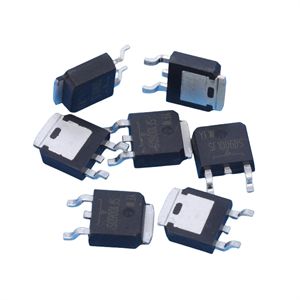Date:2024-11-14 Categories:Product knowledge Hits:321 From:Guangdong Youfeng Microelectronics Co., Ltd
Static phase shifter is connected in series in the rotor circuit of a motor, which changes the phase relationship between the rotor current and rotor voltage, and then changes the phase relationship between the stator current and voltage of the motor, in order to improve the power factor and efficiency of the motor itself, increase the motor overload capacity, reduce the stator current of the motor, and reduce the motor's own losses.
The thyristor (also known as thyristor) in the inverter is the main component of the AC/AC frequency conversion process that converts the 50Hz power frequency current in the power grid into a low-frequency current at the same frequency as the motor rotor. A thyristor is essentially a switching element that is controlled to turn on or off through a control electrode.
The control electrode, also known as the trigger electrode, of the thyristor is led out from the thyristor and fixed to the insulation board with screws, while the heat sink terminal connected to the trigger wire is the cathode of the thyristor. The anode and cathode can also be distinguished by measuring resistance. A simple way to judge the quality of a thyristor is to measure the resistance between its poles. The resistance between the poles of a good thyristor is as follows:
Trigger pole and cathode - tens of ohms;
Trigger pole and anode - tens of thousands of ohms or more;
Cathode and anode - over tens of thousands of ohms.
During actual measurement, the drive board should be removed to ensure accurate measurement. If it is found that the resistance values of four thyristors are all zero, often only a few thyristors have zero resistance values. The busbar connected to them should be disconnected and re measured.
When replacing the thyristor, attention should be paid to balancing the position of the steel ball and firmly pressing the radiator, otherwise it is easy to overheat and burn out the thyristor. After replacement, the resistance value should be checked again.
The full name of silicon controlled rectifier in English is SCR, also known as thyristor. It is widely used as a driving component for high-power equipment in industrial automation control systems in today's society. It is mainly used as a key accessory for cameras and solid-state soft start devices. The significant advantages of silicon controlled rectifier are small size, high application efficiency, and long service life during use.
With continuous technological improvements, the performance of semiconductor power electronic devices is becoming increasingly superior. The appearance has been improved from weight reduction to quality assurance. The correct selection of suitable thyristors has a protective effect on the motor. The thyristor of the phase shifter can control high power with small current, which can enable semiconductor power electronic devices to successfully enter the fields of high current control and high power control, as well as weak current control.
In the application of rectifiers, thyristors have rapidly replaced mercury rectifiers (ignition diodes), achieving solidification, statics, and non-contact rectifiers, and achieving significant energy-saving effects. Controllable silicon is commonly used in devices such as phase feeders, excitation cabinets, solid-state soft starters, and intermediate frequency power supplies.
When problems arise during the use of thyristors, it is necessary to first remove the die from the cooling jacket during inspection, and then analyze whether the breakdown is caused by voltage or unstable current. Check the quality of the thyristor edge, and sometimes it may also be caused by incorrect installation methods by the manufacturer. This requires users to consult and judge more.

Previous: Classification, Structure, and Principle of MOSFET
Next: Using voltage inspection method to quickly locate fault points in integrated circuits